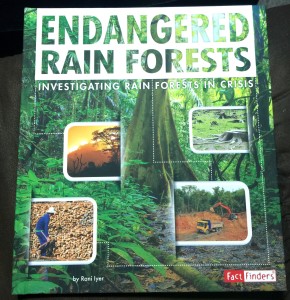Rivers are deeply connected with our life in various ways. Water for drinking, industries, and agriculture comes from the rivers. We also use river water for transportation and recreation.
A timely reminder about the importance of rivers:
Rivers are in the news every day. Sometimes, it is about a victory to stop building dams, as in Chile or closing the river due to the discovery of parasites that are killing fish.
Even as we are discovering new and fascinating ideas about our rivers, our rivers have become endangered. Read more about the causes for the endangerment in my book Endangered Rivers.
A recent discovery in the Amazon River thrilled me. Scientists have discovered a new reef system in the Amazon River! The Amazon is totally astounding in terms of the volume of water it delivers into the Atlantic. I cannot even imagine and comprehend the number 7.38 million cubic feet of water per second! The water, filled with sediments is murky.
https://www.youtube.com/watch?v=7PyKeTgY5L0
The murky water can be observed for several miles. These freshwater areas in the ocean are known as ‘Plumes.’ Usually, the coral reef occurs miles away from the plume. In the case of the Amazon River, the reef occurs right at the mouth of the river!
The reef is gigantic, spread over 3,600 square miles (9,500 square kilometers) along the ocean floor in one continuous growth. This find shows the reef is thriving in freshwater. Scientists are not sure how to explain this because the conditions that are used to explain the formation of reefs such as salinity of the water, light penetration, and even the pH are all different for the Amazon systems. Scientists have recorded 60 species of sponges, 73 species of carnivorous fish in the reef and numerous species of lobsters and stars. The southern part of the reef receives more light and scientists also recorded more diversity of creatures.
As the light diminishes along the south-north gradient, the wildlife becomes restricted to creatures like sponges. The diversity of creatures in Amazon reef is much less than a coral reef. Yet, it is important for several organisms such as lobster, rays, and snapper, which complete their earlier life stages in the reef.
Sometimes, scientists are the last to discover a valuable ecosystem. In this case, the Amazon reef is under threat by the large-scale industrial activities, such as drilling for oil nearby. There should be a solution to protect the beautiful reef. Let us work together to find it!
Read the original scientific article HERE



